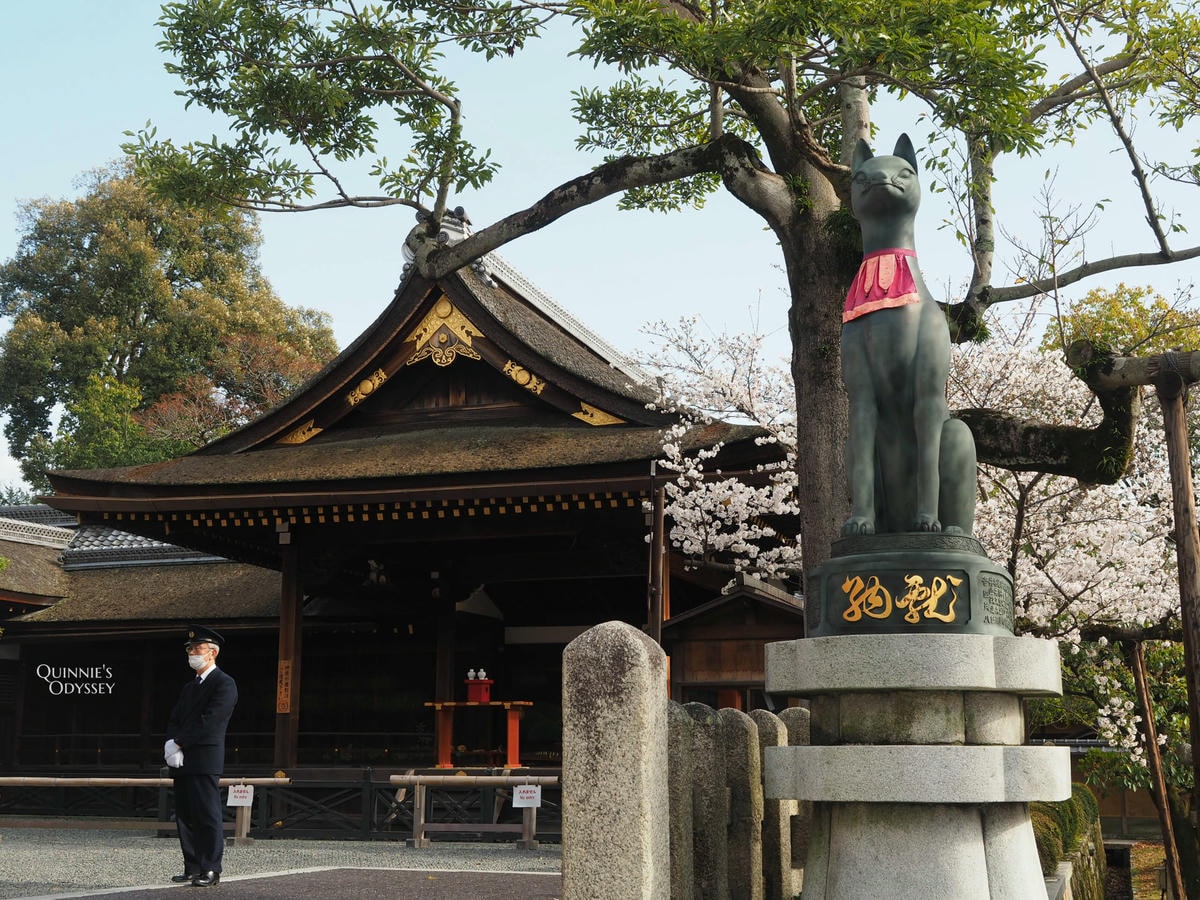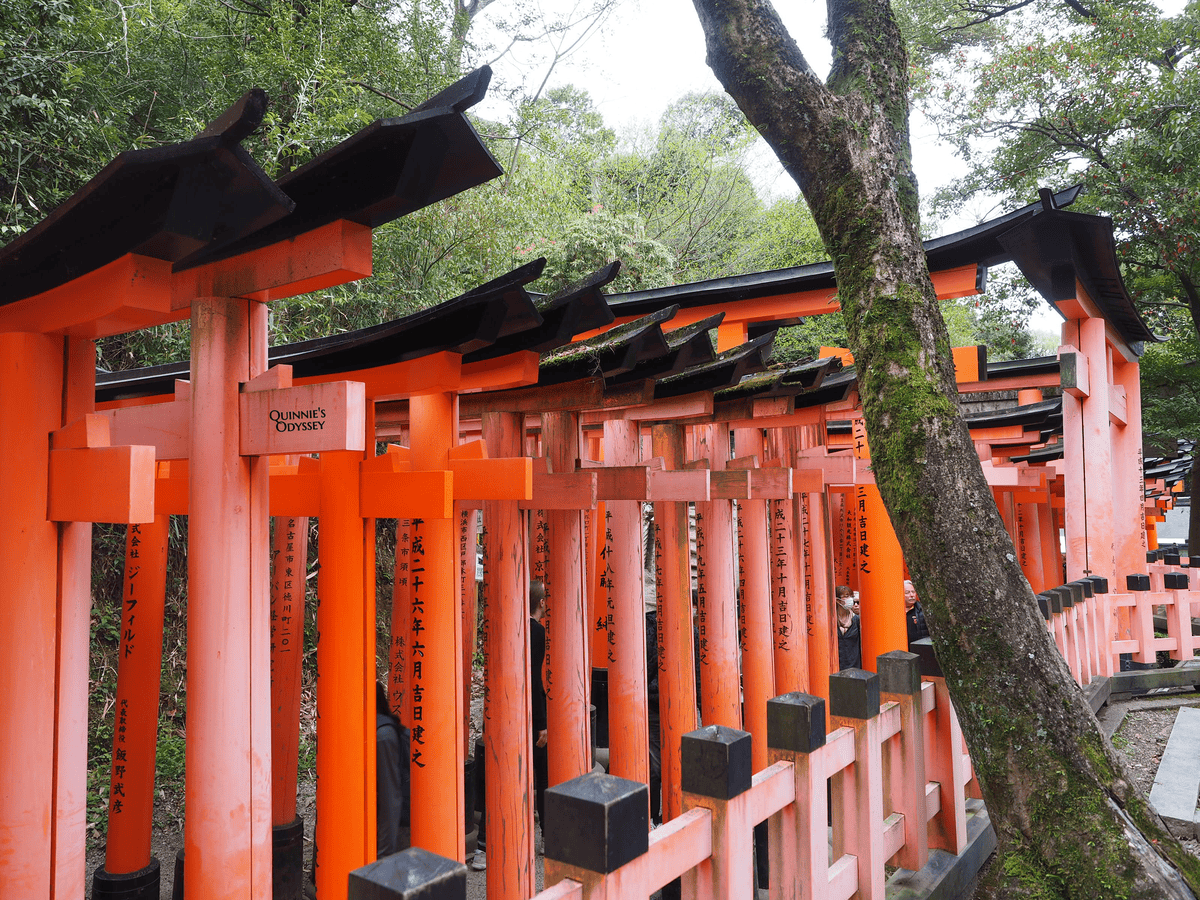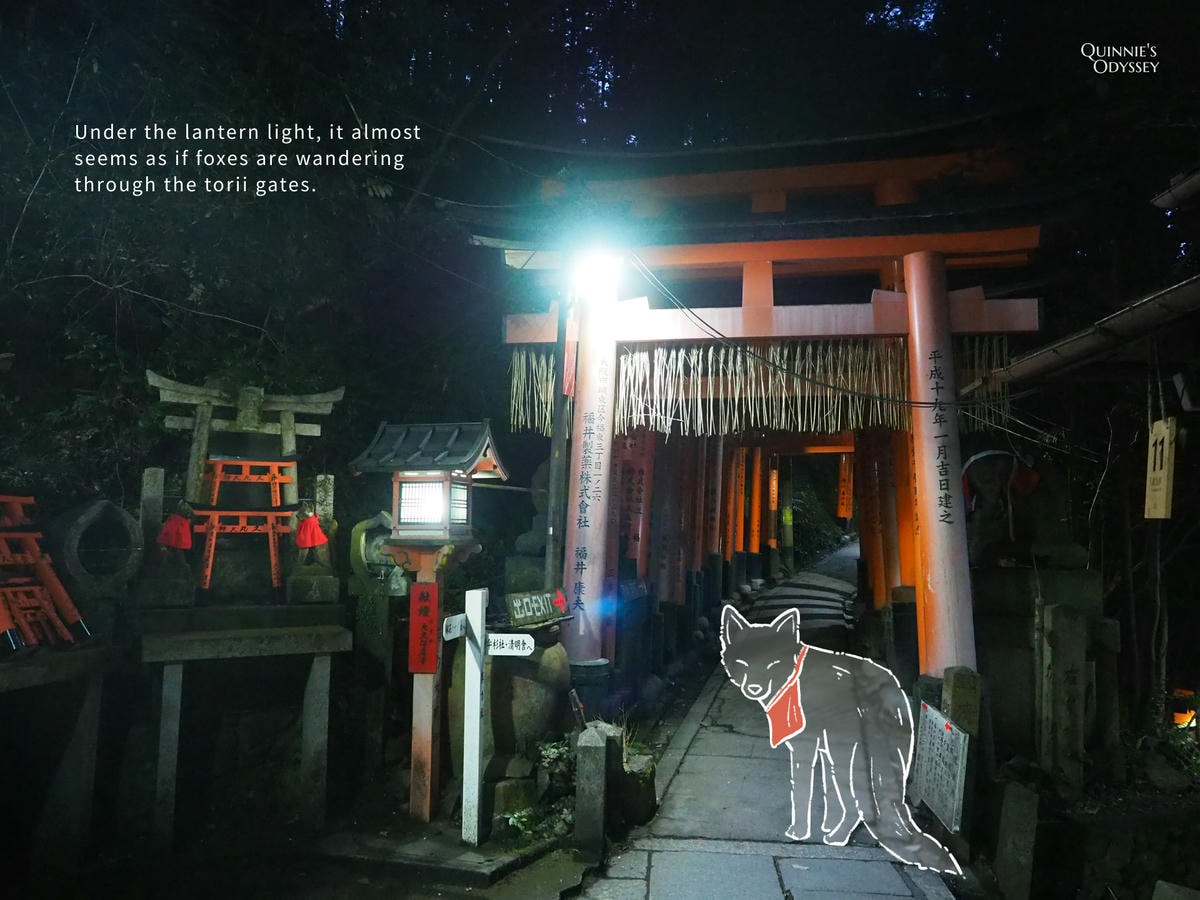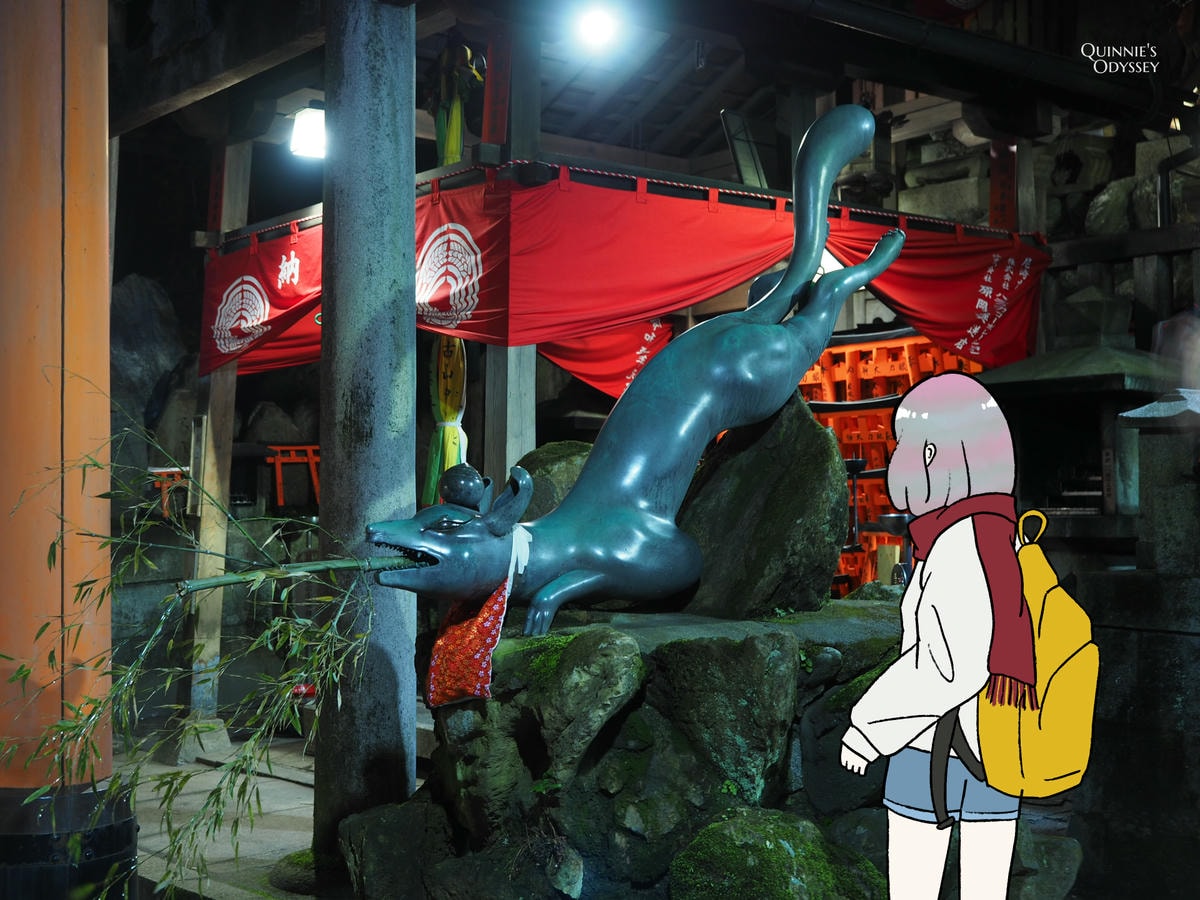Physical Address
304 North Cardinal St.
Dorchester Center, MA 02124
Physical Address
304 North Cardinal St.
Dorchester Center, MA 02124
Fushimi Inari Shrine is filled with a mystical atmosphere, whether visited during the day or at night.
It’s one of Kyoto’s most famous energy spots. The shrine is located at the base of Mount Inari, and if you follow the path of the Senbon Torii, you’ll eventually reach the summit.

To fully immerse myself in the shrine’s mysterious ambiance, I decided to visit in the late afternoon.
Around 3 or 4 PM, I first took a break at a teahouse along Fushimi Inari’s approach, enjoying some tea and snacks before starting my journey.

As you enter the shrine, one of the most striking sights is the many fox statues, especially near the main hall, where they are intricately carved.



Foxes hold great symbolic significance at Fushimi Inari Shrine 🦊
They are believed to be the messengers of the deity Inari, the god of rice cultivation, wealth, and commerce.
The fox statues at Inari shrines are often seen wearing red scarves and bells, representing sacredness and blessings. The items in the foxes’ mouths also vary, each symbolizing different kinds of good fortune. For example, a key represents wealth and abundance, a rice ear signifies a rich harvest, a scroll symbolizes wisdom, and a jade indicates prosperity.

Fushimi Inari Shrine was established in 711 during the Nara period, reportedly by the descendants of the Qin clan who migrated from China.
Legend has it that Irogu no Hatanokimi, a powerful noble at the time, used to practice archery by shooting rice cakes as targets.
One day, the rice cake he shot transformed into a white bird and flew away. He and his companions followed the bird up a mountain, where it eventually landed, and miraculously, rice began to grow in that spot.

That mountain was Mount Inari, and after witnessing this miracle, Irogu no Hatanokimi built a shrine there, naming it “Inari” ⛩️

Inari shrines hold widespread significance among both the business community and the general public in Japan. There are over 30,000 Inari shrines across the country, with Fushimi Inari Shrine in Kyoto being the main one.


One of the shrine’s most famous features is its vivid red torii gates ⛩️
Walking through the dense rows of these gates gives you the feeling of stepping into another world, almost like an entrance to a parallel dimension.

The color red is traditionally believed to ward off evil spirits.
People offer torii gates to the shrine as a way to express gratitude for their wishes being fulfilled, or to pray for future success. As more people make offerings, the number of torii gates continues to grow, creating Fushimi Inari Shrine’s iconic landscape. It’s said that there are around 10,000 gates in total.

At first, the shrine was crowded with tourists, and walking through the torii gates required patience as there was a line. While the area is known for its powerful energy, squeezing through the crowd almost drained my own energy.
My inner monologue began…

As I climbed near the Kumataka Shrine, the crowds gradually started to thin out.

Passing by Fushimi Jinpo Shrine 👇


Along the path, you’ll also come across many “otsuka” — stone monuments dedicated to various deities.



These stones often bear the names of gods worshiped by individuals, reflecting people’s desire to honor and express their faith through these carved dedications.
Today, Fushimi Inari Taisha is home to over 10,000 such otsuka.

By the time I reached the summit, the sun was beginning to set.
Twilight is what the Japanese call the “hour of meeting monsters,” when the boundary between day and night fades, and the world of the supernatural is said to come alive. As I walked through the otsuka, the golden light of the setting sun bathed the stone monuments, making them shimmer in the warm, hazy glow.



By 7 PM, the sky had completely darkened, and everything around grew quiet.
Many mysterious tales surround this place, including stories of people who venture up the paths behind Fushimi Inari Shrine and disappear without a trace. Some return with no memory of what happened during the missing hours.
One popular legend involves the mysterious fox fire. This fire, said to be blue, is supposedly created when foxes ignite their tails.
It is said that if you’re lucky (or unlucky), you might spot this fox fire along the pathways of Fushimi Inari. Foxes can use it to guide people, but they may also lead them into dangerous situations.
It’s said that those who follow the fox fire often lose their way in the mountains, eventually perishing from exhaustion. Because of such stories, many avoid visiting the mountains at night.

As the lanterns at Fushimi Inari Shrine flickered faintly in the darkness, casting soft yellow light on the torii gates, fox statues, and otsuka, the whole shrine was enveloped in a quiet, mystical atmosphere.
It wasn’t eerie or frightening, but rather enchanting, sparking endless imagination. Walking through the torii gates, I couldn’t help but think about the many legends of Fushimi Inari Shrine at night.




Even though it was dark, I couldn’t leave without visiting the “Ganriki-san Shrine“, known for its bronze spout statues.
Ganriki-san Shrine, as the name suggests, is known for helping heal eye-related ailments. It’s even believed to help improve one’s ability to judge people accurately in the workplace—very practical, haha!

Sitting at the top of Fushimi Inari Shrine at night, I gazed out over Kyoto’s glittering skyline.
A cool breeze swept through, and the clear night sky made the city below sparkle in tranquility. Kyoto’s nightscape, with its twinkling lights outlining the city, resembled a magnificent painting.

Though it was late, I still encountered a few travelers making their way up the mountain.
As I descended, I noticed some foreign tourists continuing their climb, which made me wonder what the mountain would feel like if I stayed even later into the night.


Thanks for reading!
If you’re interested in my stories, feel free to follow me on Instagram
👉👉 IG: @sika_artist 👈👈